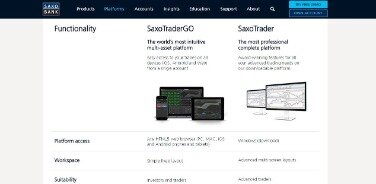Contents:


IF trader wants to trade for short time then he can buy call option for risk reduction. Most hedging strategies will place you in a low risk, low reward position in which you are protected from market movements in either direction. Therefore, your risk is mild, but it absolutely still exists.
Even most conservative investment styles have some risk attached to them. There are plenty of traders who earned decent payouts https://day-trading.info/ with carrying trades. However, the greatest weakness of this strategy is that it is heavily exposed to interest rate risk.
Forex Hedging by International Companies
An example of a classical hedge is buying an option covering the main trade. According to this parameter, a Forex hedging strategy can be classical or anticipatory. Depending on whether you bet on the price rise or fall, you put a buyer hedge or a seller hedge. In the first case, capital is insured against a possible increase in prices, and the second – a decrease.

Some traders commit the common mistake of overhedging which results in significant losses. The main factor is the distance between the initial position and the hedge position. The moment you place the hedge trade on the same instrument, the floating profit is likely negative. The smaller the hedge distance, the faster you can get out of the trade cycle. The size of the hedge distance often separates the professional from an amateur. As the name implies, you will hedge an open position with another trade in the same instrument.
Traders use hedging in Forex in order to offset the effects of sudden price movements in currencies. If the market moves against you, the option will protect you. The option does this by limiting and fixing your potential loss. You are still able to profit if the market moves in your direction.
Currency correlation and Forex hedging
Due to the discrepancy between the set price and the market execution price, spreads and broker’s commissions, you will often incur small losses while opening opposite trades. However, they are worth it if you think about the high risks you could face. Hedging allows traders not only to reduce the risks but also to make profits. Correlation is a statistical measure of how different currency pairs move at approximately the same time. They can move either in the same direction or opposite direction. The resulting profit allows you to manage the risk more freely since it is able to compensate for losses should the downward movement continue.
If there is no opportunity to use a direct hedging method, you can use positively correlated currencies to hedge risks. A positively correlating currency hedging strategy is applied in this case. Due to the complexity of hedging in forex, traders—even experienced traders—can never be fully assured that their hedge will counteract any possible losses.

Any research provided does not have regard to the specific investment objectives, financial situation and needs of any specific person who may receive it. It has not been prepared in accordance with legal requirements designed to promote the independence of investment research and as such is considered to be a marketing communication. Although we are not specifically constrained from dealing ahead of our recommendations we do not seek to take advantage of them before they are provided to our clients. Other considerations should include how much capital you have available – as opening new positions requires more money – and how much time you are going to spend monitoring the markets. If – at the time of expiry – the price has fallen below $0.75, you would have made a loss on your long position but your option would be in the money and balance your exposure. If AUD/USD had risen instead, you could let your option expire and would only pay the premium.
Why Do You Want to Hedge in Forex Trading?
Forex Margin & LeverageForex trading usually provides much higher leverage compared to other financial instruments like stocks. This is one of the primary reasons why so many people are attracted to Forex, and more and more people have started to enter the Forex trading market. As the largest financial market globally, Forex trading is one of the most popular investment avenues for many. The liquidity and huge trading volume make Forex trading an option worth exploring. In case you are wondering is Forex trading profitable, the short answer is yes. But many opt for Forex traders to make fast profits since Forex markets are operational 24 hours for five days a week.
Hedge in forex is a way to reduce market risks if the market starts trading against your preferred direction. This means, if you have a long forex position and the market starts falling, a short hedged position will help you cover the losses. Whereas, if you have a short position and markets start rising, a long hedged position will protect you against the losses. Use further risk management forex hedging techniques like stop-loss along with hedging strategies to rest assured that your trade positions help you gain profit. Determine the right forex hedging strategy that will help you minimise your losses and protect your profits.
In addition to the disclaimer below, the material on this page does not contain a record of our trading prices, or an offer of, or solicitation for, a transaction in any financial instrument. IG accepts no responsibility for any use that may be made of these comments and for any consequences that result. No representation or warranty is given as to the accuracy or completeness of this information. Consequently any person acting on it does so entirely at their own risk.
How to hedge in Forex?
This strategy saves the both traders and brokers from the risk and loss. Although in some countries this is not supported by traders like US some countries but also the brokers support this strategy. As there are different options from beating with risks so the traders use these operations for getting profit and increase winning chances. The traders use this strategy to reduce the negative results. Here the investors purchase a currency and then sale that currency with double price rates that is the main logic behind this strategy . We are all familiar with the term stock exchange or market exchange.
Hedging vs. Speculation: What’s the Difference? – Investopedia
Hedging vs. Speculation: What’s the Difference?.
Posted: Thu, 25 Jan 2018 21:03:09 GMT [source]
As we can see from the above, the GBP/JPY pair was in the consolidation phase for at least 3 months. During late February, the Pound began to fall, firstly breaking below the 50-day simple moving average and then going from 144 mark to all the way down to 124 level. Carry Trading – Essentially involving buying a higher-yielding currency against the lower-yielding one.
Forward trades are used to eliminate the risk of this happening. What happens when a company hedges their FX exposure with a forward trade, is that they enter into an agreement with a third party. Traditionally, these agreements have been provided by either brokers or banks and many companies still use brokers and banks to make these agreements. Bound is not a bank or a broker but is a company that provides the same agreement. There are a number of ways that a business can hedge its FX exposure.
- When the value of the price is low then the specified value then the traders pay for this low price.
- The option trade will give companies the right to exchange money at a minimum rate at a set point in the future if they want to.
- With our ThematiX you can trade the company stocks that benefit from business and leisure travel activities, such as Hilton, Marriott International, or Hyatt Hotels.
- You consider them a good long-term investment, however, you’re a bit nervous about the short-term price drop.
CFDs are complex instruments and come with a high risk of losing money rapidly due to leverage.76.60 % of retail investors lose their capital when trading CFDs with this provider. Retail traders hedge their trades mainly for psychological reasons and not because it’s a good trading strategy. For example, EUR/USD has an 83% negative correlation with USD/JPY. In this case, you can go long EUR/USD and short USD/JPY to hedge your USD exposure.
If the market moves in your favor, you will make less than before the hedge. Without the necessary experience, you risk putting yourself in further financial trouble. If the EUR currency value falls and your long position on GBP/USD takes a loss, the profit on your EUR/USD short position would balance out your loss. Trader’s typically use hedging strategies when concerned about news or events that might trigger sudden currency price movements. An option is a contract to buy or sell an asset at a fixed price. The trade can be carried out only before the expiration date of the option.
Therefore, the trader can calmly watch the forex market, hoping that after the reversal the value of the asset will begin to grow. Suppose that initially, the trader thought the currency pair would continue to move upward rapidly relying on the intrinsic value of the dollar. He decided to profit from the expected growth entering a but trade at the green line.
It is important to do your own research and understand how leverage works before you start trading. Although even the most elaborated hedging strategy will not save you from all trading risks, hedging is one way to attempt to protect your portfolio against a potential loss. However, there are times when the USD/CAD and oil are either correlated to a certain degree or not tradingkan cfd pada forex, indeks saham, logam dan lainnya correlated at all. When this happens, traders may hedge their exposure to the USD/CAD by engaging in spot oil trades or positions in derivative instruments like futures and options. Despite a high positive correlation, there are differences in price movements, volatility, and liquidity levels. The Australian dollar is a more liquid market than the New Zealand dollar.

